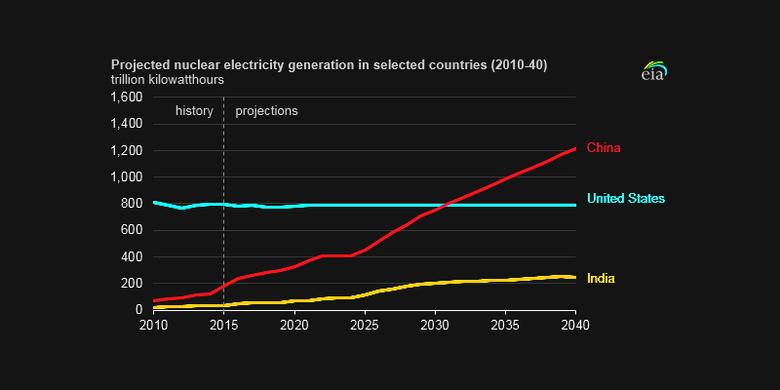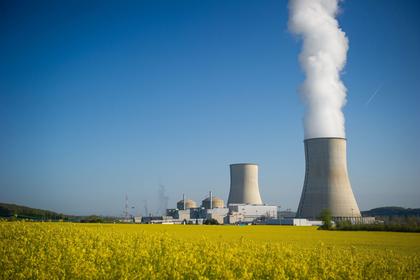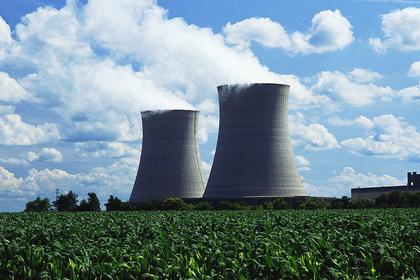CHINA'S NUCLEAR WILL UP

РЕЙТЕР -
-----
Раньше:

2018, March, 14, 11:45:00
REUTERS - U.S. West Texas Intermediate (WTI) crude futures CLc1 were at $60.77 a barrel at 0753 GMT, up 6 cents, or 0.1 percent, from their previous settlement. Brent crude futures LCOc1 were at $64.62 per barrel, down just 2 cents from their last close.
|

2018, March, 7, 15:00:00
РЕЙТЕР - К 9.17 МСК фьючерсы на североморскую смесь Brent опустились на 0,85 процента до $65,23 за баррель. Фьючерсные контракты на американскую лёгкую нефть WTI к этому времени торговались у отметки $62,07 за баррель, что на 0,85 процента ниже предыдущего закрытия.
|

2018, March, 7, 14:00:00
EIA - North Sea Brent crude oil spot prices averaged $65 per barrel (b) in February, a decrease of $4/b from the January level and the first month-over-month average decrease since June 2017. EIA forecasts Brent spot prices will average about $62/b in both 2018 and 2019 compared with an average of $54/b in 2017.
|

2018, March, 5, 11:35:00
РЕЙТЕР - К 9.28 МСК фьючерсы на североморскую смесь Brent поднялись на 0,33 процента до $64,58 за баррель. Фьючерсные контракты на американскую лёгкую нефть WTI к этому времени торговались у отметки $61,44 за баррель, что на 0,31 процента выше предыдущего закрытия.
|

2018, March, 4, 11:30:00
МИНФИН РОССИИ - Средняя цена нефти марки Urals по итогам января – февраля 2018 года составила $ 65,99 за баррель.
|

2018, February, 27, 14:15:00
РЕЙТЕР - К 9.18 МСК фьючерсы на североморскую смесь Brent опустились на 0,15 процента до $67,40 за баррель. Фьючерсные контракты на американскую лёгкую нефть WTI к этому времени торговались у отметки $63,80 за баррель, что на 0,17 процента ниже предыдущего закрытия.
|

2018, February, 27, 14:05:00
МИНФИН РОССИИ - Средняя цена на нефть Urals за период мониторинга с 15 января по 14 февраля 2018 года составила $66,26457 за баррель, или $483,7 за тонну.
|
CHINA'S NUCLEAR WILL UP

ENERDATA - 10 Jul 2020 - China should increase its nuclear capacity by more than 40% between 2020 and 2025,with six to eight nuclear reactors commissioned per year. The country should raise total nuclear power capacity from the current 48.7 GW (at the end of 2019) to 70 GW in 2025. In the short run, however, China is expected to miss its 2020 target (58 GW) as the country's nuclear capacity should stand at 52 GW by the end of 2020.
After an 18% growth in 2018, the installed nuclear power capacity in China increased by 9% in 2019, from around 44.6 GW to 48.7 GW, with the connection of two reactors to the grid (Yangjiang-6 and Taishan-2). In addition, 12 nuclear reactors totalling 12,244 MW are currently under construction and another 42 reactors are planned with a combined capacity of 48,660 MW.
According to China's National Energy Administration, China's nuclear power generation rose by more than 18% in 2019, raising the share of nuclear in the power mix from 4.1% to 4.9%. Overall, power generation in China grew by 5.2% and thermal power plants (mainly coal-fired power plants) still accounted for 72% of the power mix, followed by hydropower (16%), wind (5%) and solar (1.6%).
-----
Earlier:

2020, July, 8, 11:40:00
NUCLEAR POWER: CLIMATE BENEFITS
France and the UK had previously blocked an agreement on the green finance taxonomy, arguing it failed to recognise the environmental benefits of nuclear power, which emits almost no greenhouse gases blamed for global warming.

2020, July, 8, 11:35:00
NUCLEAR POWER: ZERO EMISSIONS
Nuclear power is a zero-carbon source of electricity that made up 20% of US electricity generation in 2019
All Publications »
Tags:
CHINA,
NUCLEAR












